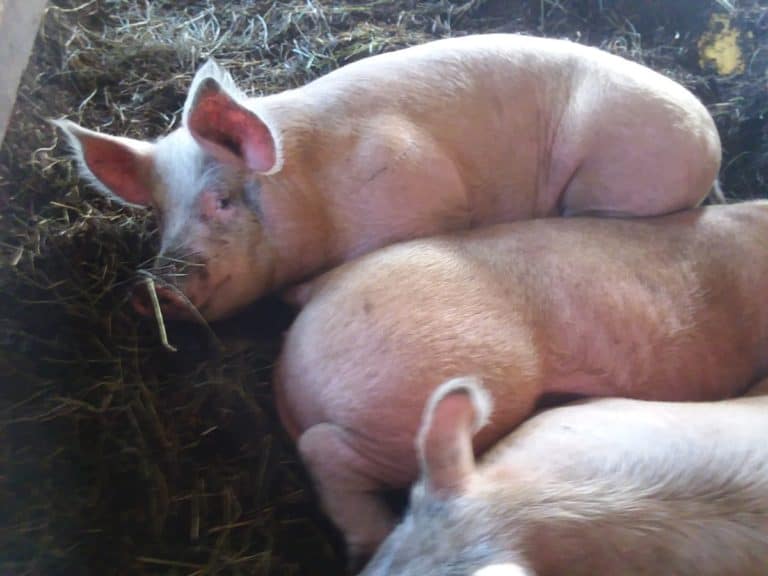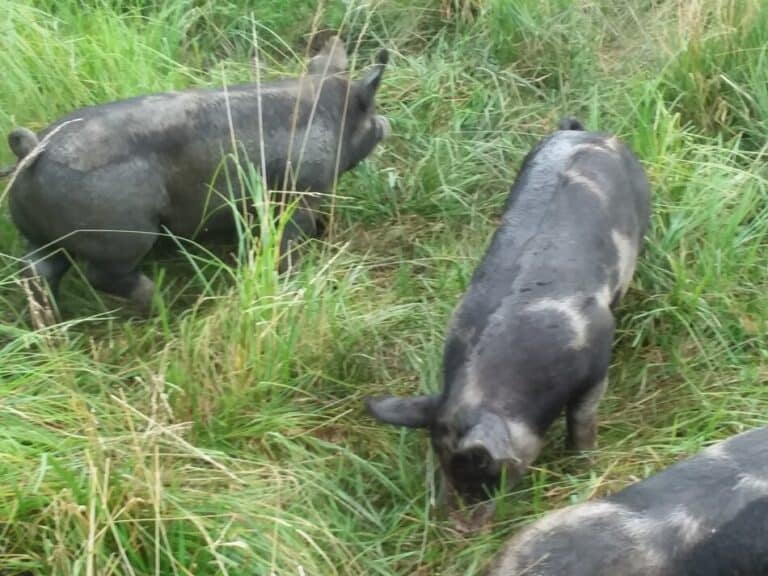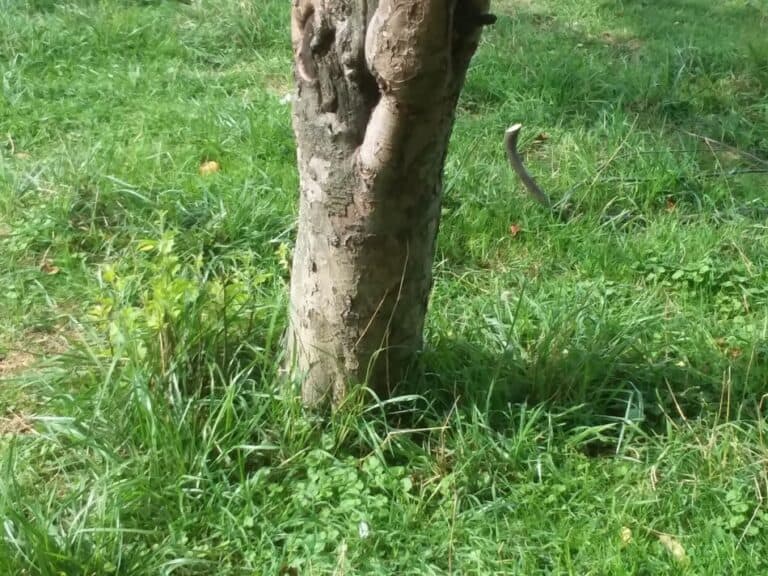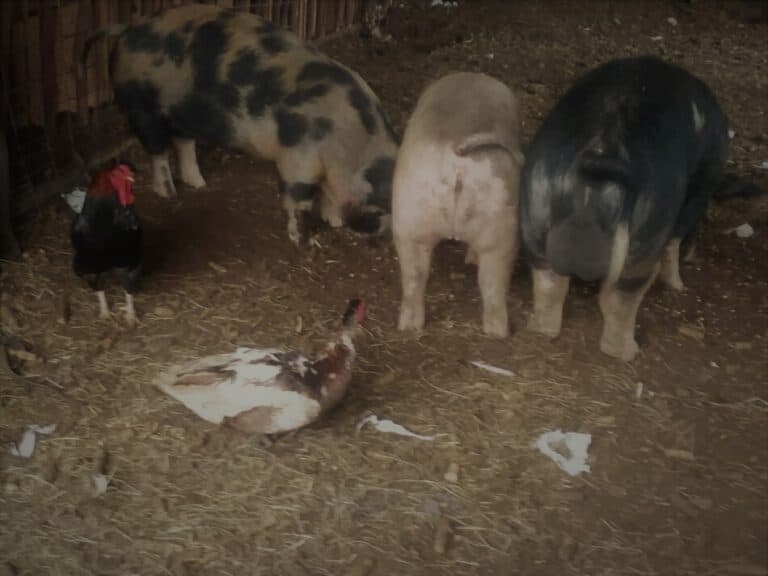How Far Can You Run An Electric Fence?

Thinking about putting up some electric fencing? You’ll surely have some questions!
How do you know how far you can run an electric fence and do the different types of fences change how long the fence can be?
One joule of power is needed per mile of fence for a 3 wire cattle fence. Increasing the number of strands in the fence will reduce fence length per joule. Weed or grass pressure, as well as using electric netting, drastically reduce fence length per joule.
We use electric fence everyday, year round! Electric fencing is great for fencing in oddly shaped spots or areas that do not have a permanent perimeter, for us, that’s most of the farm!
Why Is My Electric Fence Not Working? will walk you through the steps you need to follow to find and fix a problem with your fence.

You can run 1 mile of fence per joule of energizer output
Generally speaking, you can plan on running one mile of fence per joule of output.
The joules will be listed on the outside of the fencer. Be sure the number you are looking at is the output of the energizer, not just the stored joules.
Stored joules are 70% of output, meaning the power actually going through the fence is the number you need to use to calculate the distance of the fence you can power with a particular energizer.
That’s not a huge difference, but it is a noticeable one, so be sure you are working with output joules.
Does Electric Fence Need To Be A Circle? will go over a few different ways to set up your fence and have more information on keeping your fences in top form.
Length of fence is determined by fence type and energizer joules
So, how long of a fence can you have? Really, what you need to figure up is the power you’ll need for the length of fence you want or you need to know the joules of the energizer you are using.
The distance you can run an electric fence is really determined by the power you have running through the fence lines and the number of lines in the fence.
How Do You Power An Electric Fence? goes over the different energizer options you have and which one would be best for your situation.
The more powerful the energizer you are using and the less weed or grass pressure you allow on the fence line, the longer of a fence line you can run.
| Energizer joules (released not stored) | 3 strand fence (cattle fence) | 5-7 strand fence (sheep and goat) | Electric netting (sheep or goat) | Electric netting (poultry) |
| 1 | 2 miles | .75 | 10 | 4-5 |
| 2 | 2.5 | 1 | 16 | 8 |
| 3 | 3 | 1.5 | 18 | 9 |
| 4 | 4 | 2 | 24 | 12 |
| 5 | 5 | 2.5 | 28 | 8-17 |
| 6 | 6 | 3 | 28 | 14 |
| 8 | 6-8 | 4 | 30-34 | 15-17 |
| 12 | 12 | 5 | 40 | 20 |
Please note that the condition and type of fence, as well as the environment will have a huge effect on these numbers.
Areas that are extremely dry or have excessive weed pressure will not be able to run as long of a fence as areas that have adequate moisture and keep fence lines weed free.
How do you test for the voltage in your fence? Use voltmeter or buy a fence tester. Test when your fence is running perfectly, so you can guess at the severity of your problem when you get less than perfect readings!
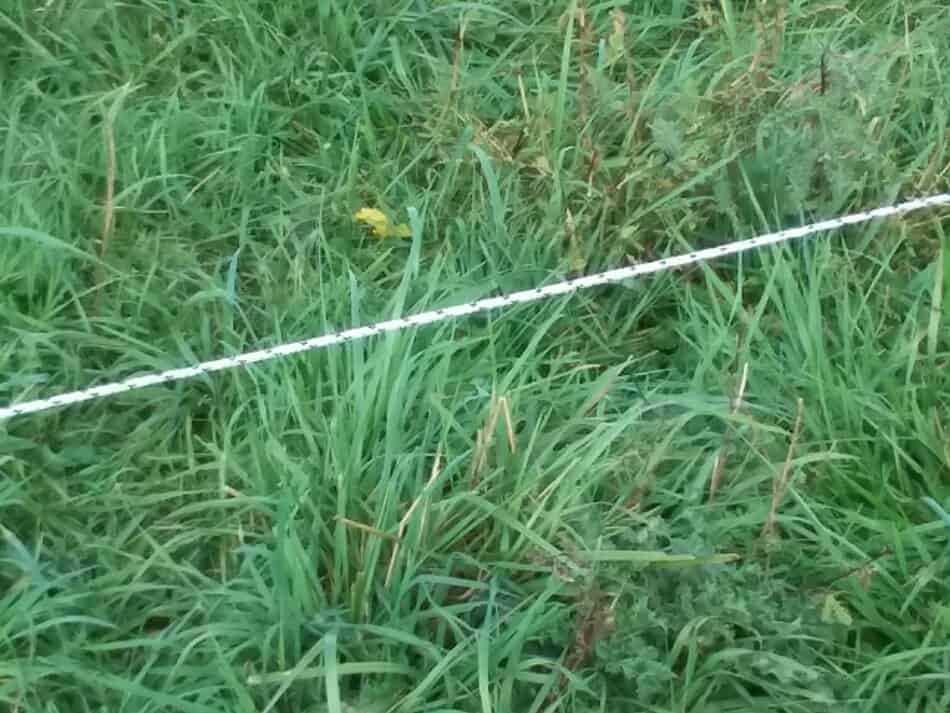
Multi stranded fences take more power than single stranded fences
The more strands in your fence, the more power it takes for the length of the fence.
I mentioned above that how long you can run your fence depends upon the type of fence you are using. What’s the type of fence? I’m referring to multi stranded fences vs. single strand vs. electric netting.
Even the different types of netting require different levels of power. From what I have seen, poultry netting takes twice the power for the length as sheep and goat netting.
For example: if your energizer can charge 10 sheep nettings, it can probably handle more like 4-5 poultry nettings.
The reason is that the sheep netting has power on the horizontal lines only, poultry netting has power on the verticals, too. More lines of wire, or in this case polywire, the more power needed to charge the fence.
You’ll notice in the chart above, that a 3 strand cattle fence basically takes half of the power of a 5-7 strand sheep or goat fence of the same length.
This is because length calculations are based per wire, more wires equals less distance when used with the same energizer.
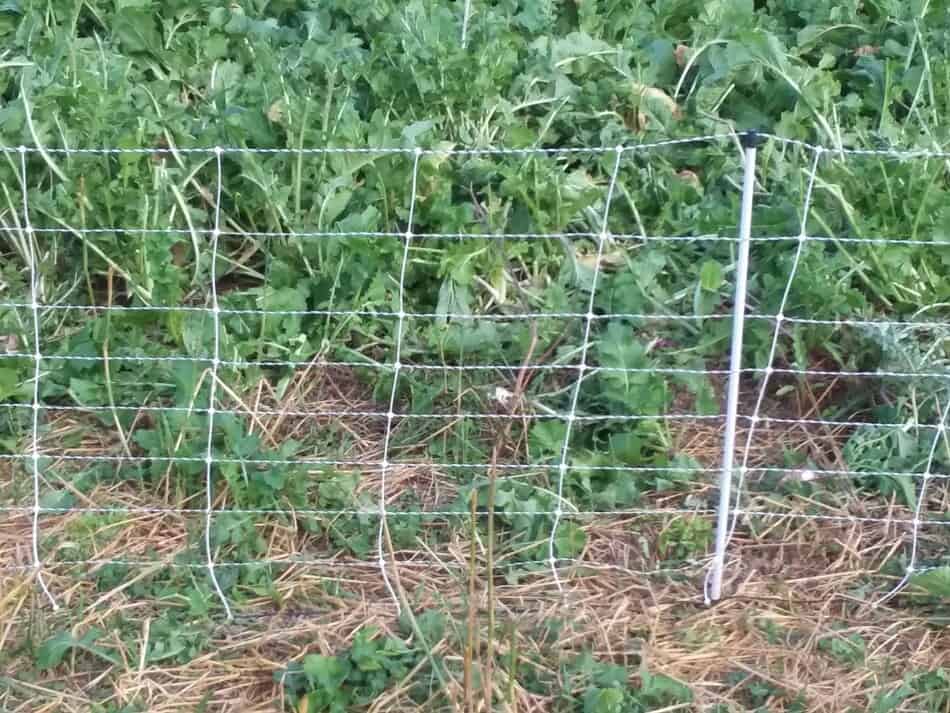
Electric netting needs significantly more power than single or multi strand wire fence
Electric netting is really a multi stranded fence, that requires a lot of energizer power per foot of fence when compared to metal wire fences.
The materials used to make the netting do not conduct electricity as well as a single strand of metal, this is why nettings take so much more power for the length of fence, netting sucks power.
Get a more powerful energizer than you need
Once you have an idea of what you are planning on fencing in, you need to read some energizer descriptions and see what voltage the energizer is capable of producing.
Voltage and fence configuration combined will determine which animals the energizer can be used for.
It’s important to remember that these numbers are the voltage as measured in the wire or fence, not just power coming from the energizer.
This means that your fence line has to be clear of vegetation or materials that will steal power, like wire touching a metal T post, for you to get the containment you need for your animals.
| Animal | Minimum | Higher need | Example |
| Cattle | 3,000 | 4,000 | bull |
| Sheep | 3,000 | 5,000 | jumpers |
| Goats | 5,000 | 5,000 | tall goats |
| Pigs | 3,000 | 3,000 | |
| Poultry | 4,000 | 5,000 | predators |
Weed or grass pressure will take power from fence
Your electric fence works by sending a shock through the wire that goes all the way to the end of the fence, staying in the fence wire the entire time. When you can hear your fence shock every few seconds, you are losing power.
If you have a large amount of plant materials touching the fence, you will lose power as the fence shocks the plants, rather than keeping the power in the fence line.
Keep forages away from fence wire by trimming or mowing
Mowing or trimming your fence lines will help to keep weed or grass pressure from taking power away from your fence.
Another option, if you are using portable fence, is to drive over the area (with a truck or ATV) where you plan to put the fence line. The tracks in the grass will be great for keeping the forage away from the fence.
Environmental factors determine effectiveness of electric fence
Sadly, no matter how good of a job you do setting up and maintaining your fence, you will be in situations where the fence will not work well. Sometimes this will change, but other areas are perennially hard to fence with electric.
Extreme environments are hard to energize well. Overly dry and overly wet are both problematic, with dry being the more challenging situation of the two.
Another weather factor to consider is snow. Snow is an insulator, so your animals can be standing on a pack of snow and touching the fence, but not getting shocked because they are not touching the dirt!
Resources:
Kencove.com Volts vs. Joules, for the 1 joule per mile of fence figure
Premier 1, Electric Fence Energizers, I looked up each energizer individually and combined those numbers into the above chart
Electric Fencing Direct, How much power is needed to protect and deter animals?, voltage needed per species
